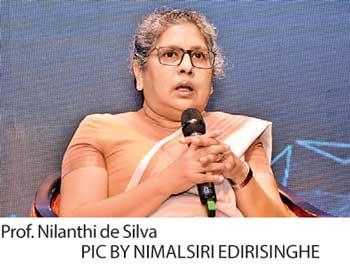23 Sep 2019 - {{hitsCtrl.values.hits}}
 By Shabiya Ali Ahlam
By Shabiya Ali Ahlam
A leading academic in the country has called for smarter revamping of the local higher education sector, as Sri Lanka falls behind lower middle-income economies
in this regard.
While a large proportion of the country, mostly the political fraternity, harp on the fact that Sri Lanka has one of the highest literacy rates in the world, this benefit cannot be reaped as much due to the massive mismatch between what the current education system produces and what the country’s industries require.
Highlighting the current state of the higher education space of the country, Kelaniya University Parasitology Senior Professor Nilanthi de Silva asserted that the sector requires
radical change.
“We do need a well-educated workforce if we need to support the growth we are aiming for. The thing is, as we are looking to become an upper middle-income country, we need to figure out a strategy that is different to what we have been using in the past.
“In the higher education sector, we are at a point where we do need to undergo a radical change,” she told the recently concluded Sri Lanka Economic Summit (SLES) 2019.
The academic pointed out that when looking at the gross enrolment ratio in higher education, Sri Lanka’s rate of 21 percent is well below that of even lower middle-income countries, which is at 23 percent, while Upper middle-income nations have an average enrolment rate of at 44 percent.
“We need to increase this from 21 percent to at least 35 percent in the next 10-year period. That is a big challenge. It cannot be done at the state university level along. It is also not something we should look at doing by increasing numbers in the same proportion and ratios we have at the moment,” de Silva said.
She shared that although the demand for higher education has been steadily increasing over the years, relevant authorities are yet to process this growing demand in a manner best suited to the students as well as to the economy.
The secondary school completion rate has grown from 82 percent in 2011 to 85 percent in 2016. The number of students sitting for A/Ls has increased from 121,000 in 2007 to 163,000 in 2017. Similarly, the number of students applying for admission for state university, and securing seats has also increased.
But, as de Silva pointed out that number remains is considerably less, as it has only grown from 20, 000, to 31, 000 over the recent years in the 15 universities registered under the University Grants Commission.
Meanwhile, she also urged the need to move away from the free education system to a coupon method, where the student is granted the necessary fund via the coupon, based on the subject area preferred by the student
14 Nov 2024 52 minute ago
14 Nov 2024 2 hours ago
14 Nov 2024 2 hours ago
14 Nov 2024 2 hours ago
14 Nov 2024 3 hours ago